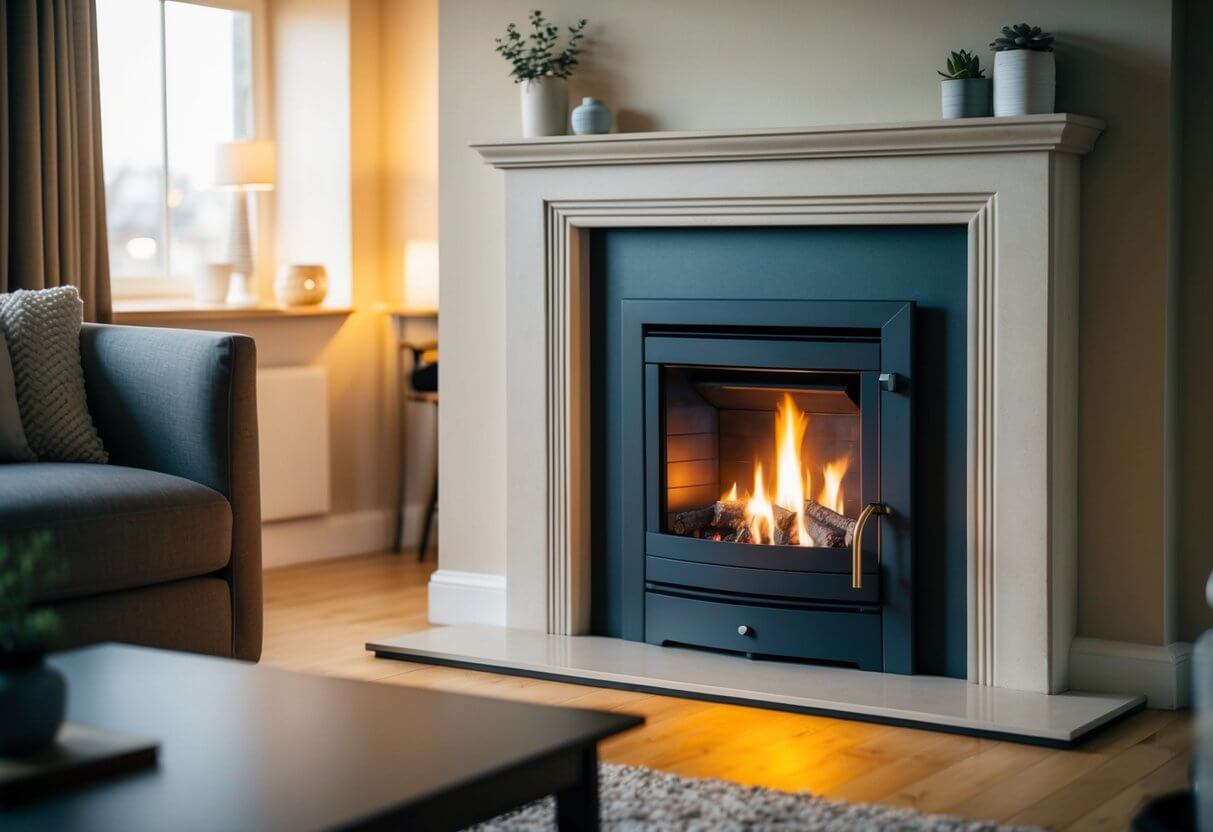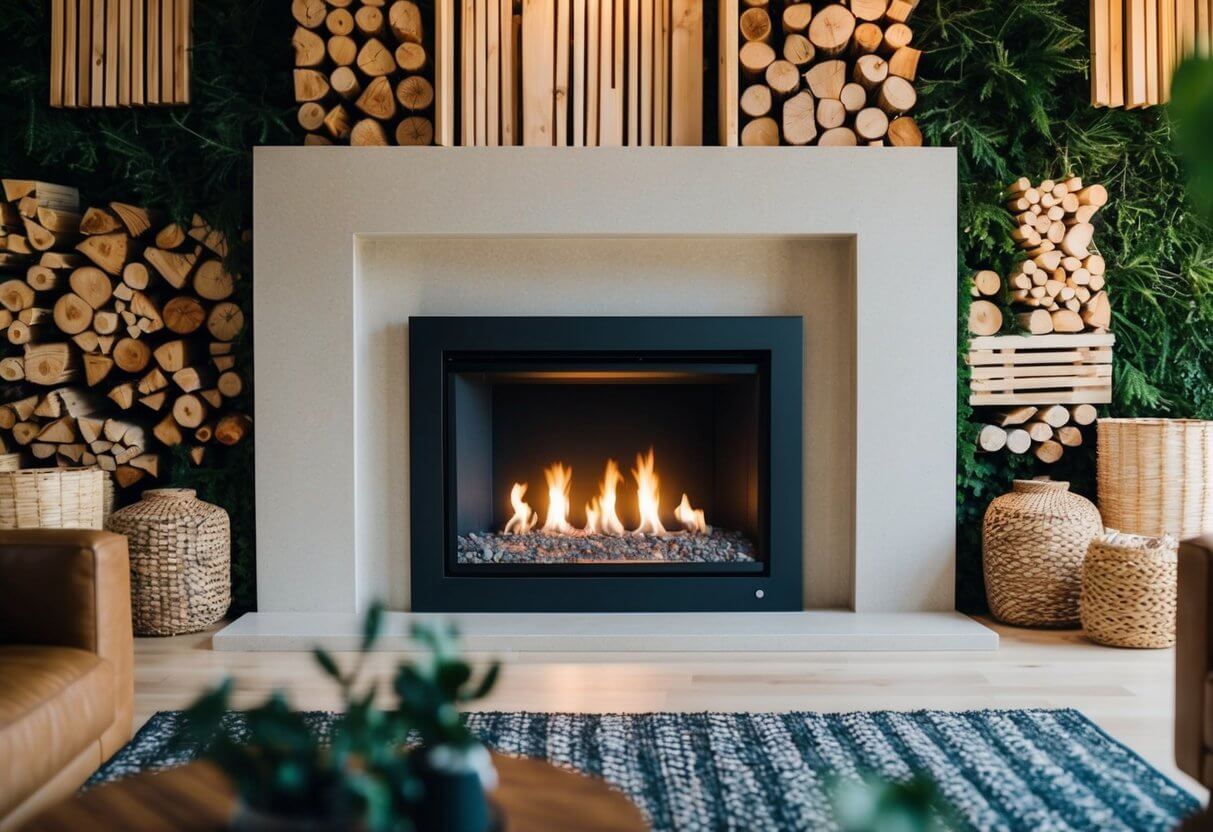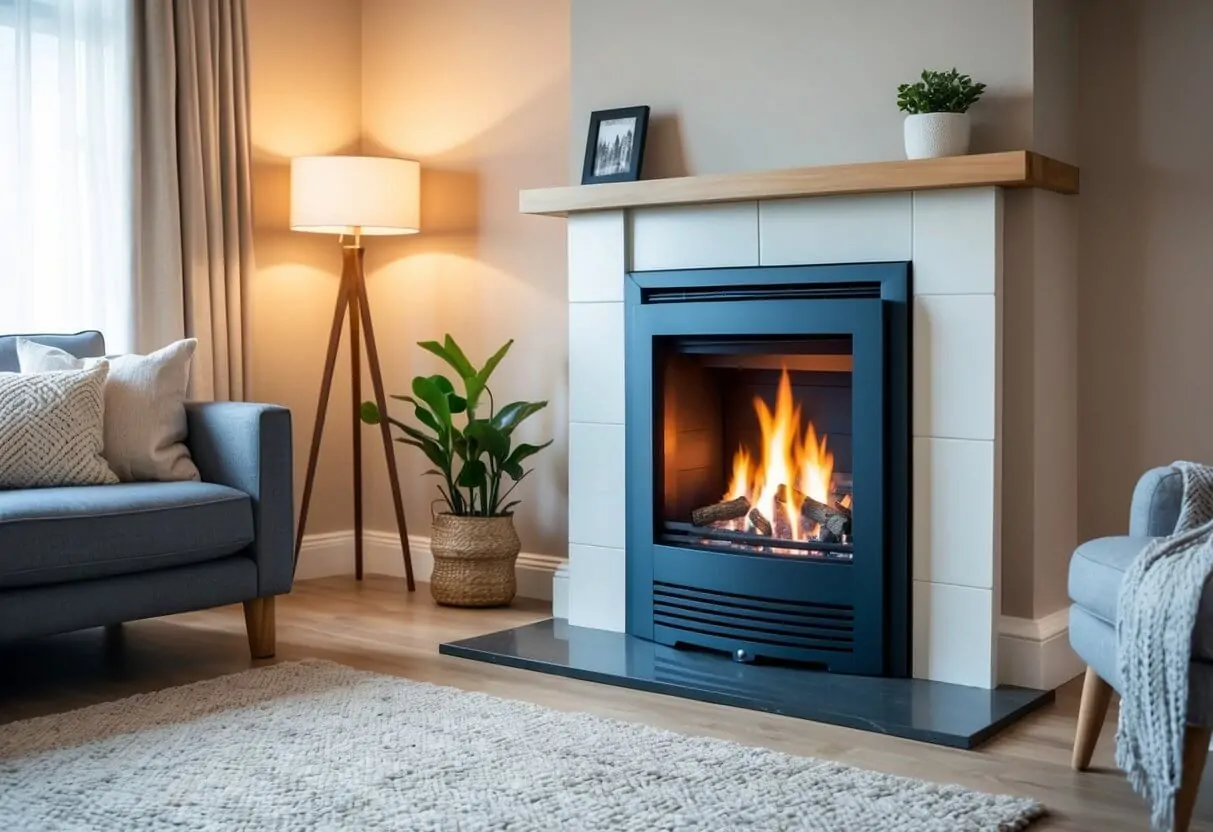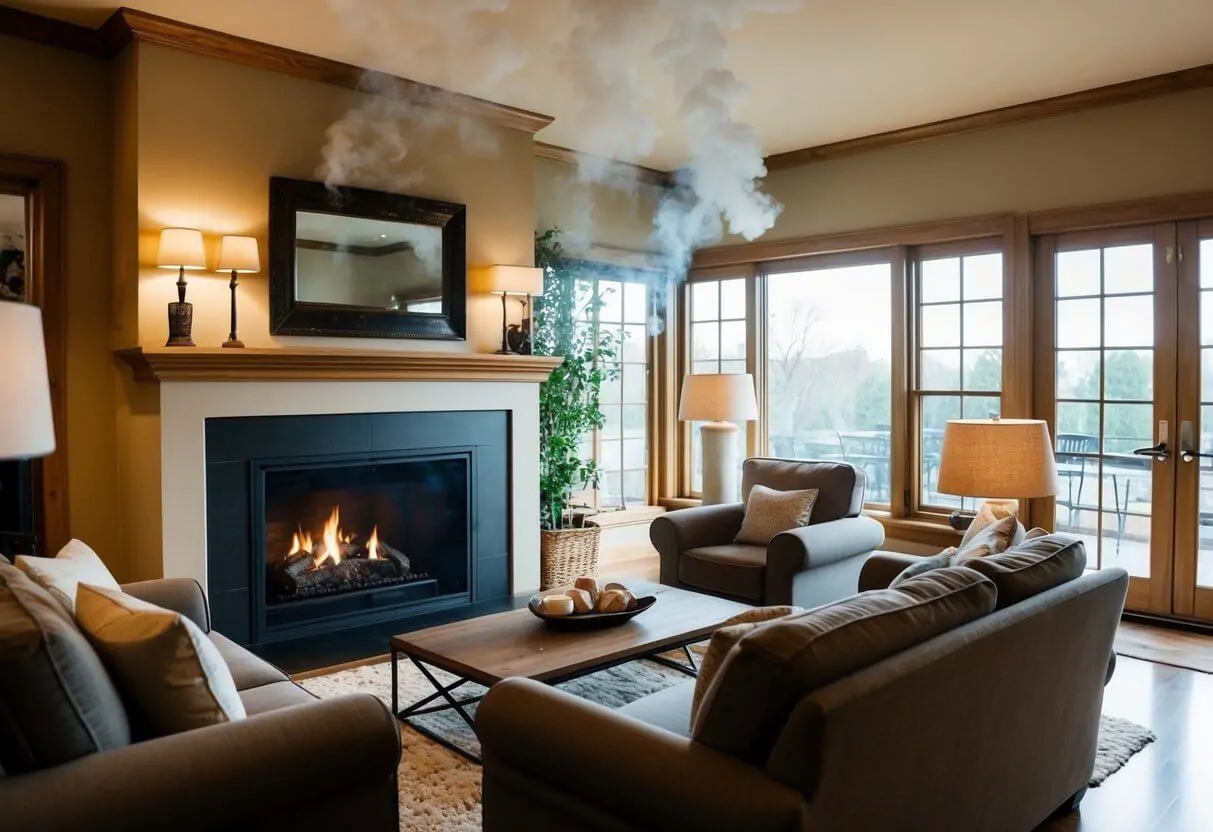Gas Fireplace or Wood Fireplace: Choosing the Right Heat Source for Your Home
Choosing the right fireplace for your home involves more than just aesthetics. It’s about finding a balance between comfort, efficiency, and environmental impact. Gas and wood fireplaces are popular options, each with their own set of advantages and drawbacks.

When considering a fireplace, it’s important to think about factors like sustainability, emissions, and overall energy efficiency. These aspects can significantly affect both your home’s carbon footprint and your long-term costs. By understanding the differences between gas and wood fireplaces, you can make an informed decision that aligns with your lifestyle and values.
Key Takeaways
- Fireplace choice impacts home comfort and environmental footprint
- Gas and wood fireplaces differ in efficiency and maintenance needs
- Factors like emissions and energy use are crucial in fireplace selection
Renewable vs Non-Renewable Heat Sources
Fireplaces rely on different fuel types. Wood-burning options use trees, which can grow back over time. This makes wood a renewable resource. Gas fireplaces burn natural gas or propane. These fossil fuels cannot be replaced once used up.
From an environmental view, wood has an edge:
- Renewable
- Can be locally sourced
- Carbon neutral when managed well
Gas is convenient but not sustainable long-term. Wood requires more effort but offers a greener heating choice.
Greenhouse Gas Output
Gas fireplaces produce less carbon emissions than wood-burning ones. They emit fewer harmful pollutants and reduce the risk of dangerous buildup in chimneys. Gas fireplaces are more energy-efficient, working at higher levels of performance. This leads to lower energy bills and a smaller carbon footprint for homes. While both options have pros and cons, gas comes out ahead in terms of emissions and indoor air quality. Homeowners looking to minimize their environmental impact may want to consider gas over wood when choosing a fireplace.
Health Risks of Fireplaces
Fireplaces can pose health risks. Wood-burning fireplaces release smoke that can harm lungs. This smoke may make breathing harder for people with asthma. It might also raise the risk of some cancers.
Gas fireplaces don’t make wood smoke. This makes them safer for health. But they still need good air flow. Without it, they can release carbon monoxide. This gas is very dangerous.
Both types of fireplaces can affect air quality indoors. Wood fires create more pollutants. Gas fires make fewer, but still need care.
To stay safe:
- Keep fireplaces well-maintained
- Clean chimneys to avoid creosote buildup
- Use carbon monoxide detectors
- Open a window for fresh air
While fireplaces give warmth and comfort, it’s key to use them safely. Good care and smart habits can help reduce health risks from fireplaces.
Common Questions About Gas and Wood Fireplaces
Gas vs Wood Fireplaces: Key Differences
Gas fireplaces offer easy use and low maintenance. They turn on instantly and provide steady heat. Wood fireplaces give a classic look and smell. They need more work but create a cozy feel.
Gas fireplaces cost less to run over time. Wood can be cheap if you cut it yourself. Gas units need professional installation. Wood fireplaces need regular chimney cleaning.
Impact on Home Resale Value
Both types can boost home value. Gas fireplaces appeal to buyers who want easy use. Wood fireplaces attract those seeking tradition. The best choice depends on the local market and buyer preferences.
Cost Comparison
Initial costs are similar for both. Gas fireplaces cost $2,300-$4,000. Wood fireplaces range from $1,900-$3,300. Ongoing costs differ. Gas units have steady fuel bills. Wood costs vary based on local prices and if you cut your own.
Heat Output Comparison
Wood fireplaces can produce more heat. Their output varies based on wood type and amount. Gas fireplaces give steady, controllable heat. They work well for zone heating specific rooms.
Safety Considerations
Gas fireplaces need proper venting to prevent gas leaks. They should have carbon monoxide detectors nearby. Wood fireplaces require regular chimney cleaning to avoid fires. Both types need clear space around them and proper use to ensure safety.
Home Value Addition
Both can add value, but the amount varies. Gas fireplaces often appeal to more buyers due to ease of use. Wood fireplaces can be a unique selling point in some markets. The value boost depends on local preferences and the fireplace quality.




